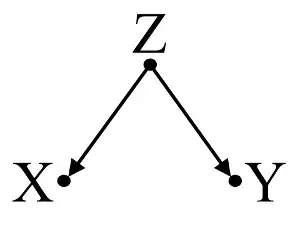Suppose it is required to test the fitting of binomial distribution to the following data ( at level $\alpha =0.05$) :
the parameter p is estimated as p = 0.494 , and the expected frequencies (given in red ) are also calculated .
let the claculated value of chisquare statistic (using the formula $\sum\frac{(O_i - E_i)^2}{E_i}$ ) be $\chi_{cal}^2 $ (say)
my question is : what type of hypotheses does "goodness of fit" signifies , i.e is it single tailed or two tailed ?
in other words ( or expressing my question more clearly by showing the way i attempt it)
$ H_0 : $ $ P = 0.494 $ or fit of the model is good
$ H_1 : $ $ P \ne 0.494$ or fit of the model is not good
then the test criteria should be to accept $ H_0 $ iff
$\chi_{0.025}^2 \le \chi_{cal}^2 \le \chi_{0.975}^2 $
but thats not the actual story , every source that i reffered , says that test criteria should be to accept $ H_0 $ iff
$ \chi_{cal}^2 \le \chi_{0.05}^2 $ , why is this happening , if its a two tailed hypotheses then both ends should be reffered ? please correct me where i am wrong
